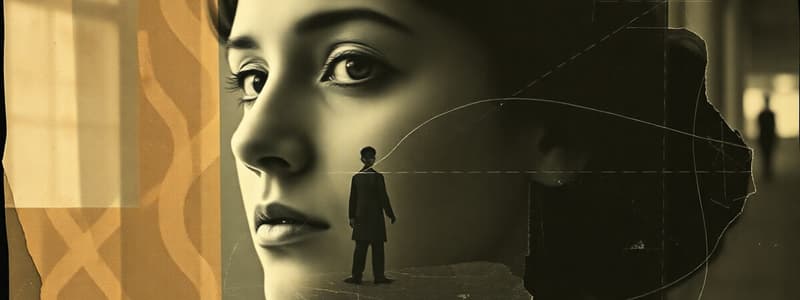Podcast
Questions and Answers
Which f/stop provides the largest aperture opening?
Which f/stop provides the largest aperture opening?
- f/1.4 (correct)
- f/2.8
- f/5.6
- f/4
What does the principle of balance refer to in composition?
What does the principle of balance refer to in composition?
- The visual distribution of objects and space (correct)
- The variation of light in the composition
- The use of contrasting colors
- The repetition of shapes throughout the artwork
Which option best defines texture in photography?
Which option best defines texture in photography?
- The tonal difference in an image
- The repeating shapes in an artwork
- The surface quality that can be seen and felt (correct)
- The three-dimensional appearance of forms
How is movement created in a photographic composition?
How is movement created in a photographic composition?
What does positive space refer to in a composition?
What does positive space refer to in a composition?
What happens to the image if the aperture is changed from f/1.4 to f/22 while keeping all other settings constant?
What happens to the image if the aperture is changed from f/1.4 to f/22 while keeping all other settings constant?
What is the primary function of ISO in photography?
What is the primary function of ISO in photography?
Which shutter speed setting allows the most light to enter the camera?
Which shutter speed setting allows the most light to enter the camera?
What does the 'A' or 'AV' setting signify on a camera's setting dial?
What does the 'A' or 'AV' setting signify on a camera's setting dial?
What aspect of a photograph is directly affected by adjustments in the aperture setting?
What aspect of a photograph is directly affected by adjustments in the aperture setting?
Flashcards are hidden until you start studying
Study Notes
Exposure Triangle and Terms
- Shutter Speed: Controls the duration of light exposure on the sensor, affecting motion blur.
- Aperture: Controls the amount of light passing through the lens, influencing depth of field (blurry background).
- ISO: Determines the sensor's sensitivity to light; higher ISO = brighter image, but can introduce grain and noise.
- Camera Shake: Occurs at slower shutter speeds due to hand movement, resulting in blurry images.
- Shutter Priority (TV): The camera automatically adjusts aperture to maintain the desired shutter speed.
- Program Mode (P): The Camera chooses both the shutter speed and aperture.
- Aperture Value (A or AV): Allows the photographer to manually set aperture, while the camera automatically adjusts shutter speed for proper exposure.
- Focal Length: The distance from the center of the lens to the point where light converges (focal point). It determines the field of view.
- F/Stop: A measurement of the aperture opening. A lower f-stop number (e.g., f/1.4) indicates a larger aperture opening, allowing more light in, and achieving a shallower depth of field.
- Bokeh: The aesthetic quality of the blur in out-of-focus areas of a photo.
- Pixels: Tiny light-sensitive elements on a digital camera sensor that capture information to create an image.
### Elements and Principles of Photography
- Elements of Art are the basic tools or building blocks of photography.
- Principles of Art are the ways in which the elements are combined to create a photograph.
- Contrast: The difference in light and dark tones in a photo, creating visual interest.
- Shape: A two-dimensional form with defined edges.
- Form: A three-dimensional shape with height, width, and depth.
- Line: A mark that has greater length than width, used to guide the eye.
- Texture: The surface quality of an object, as perceived by touch or sight.
- Value: The lightness or darkness of a color, also known as tonal range.
- Balance: The visual distribution of elements in a photo, creating a sense of equilibrium.
- Repetition: The repeated use of elements in a photo.
- Space: The area occupied by an element in a photo, including both negative and positive space.
- Positive Space: The area occupied by an object in a photo.
- Negative Space: The empty area surrounding an object in a photo.
- Emphasis: The focal point of the photo, drawing the viewer's attention.
- Movement: The path the viewer's eye follows through the photo.
- Color: The light reflected off an object, perceived by the human eye.
Studying That Suits You
Use AI to generate personalized quizzes and flashcards to suit your learning preferences.




